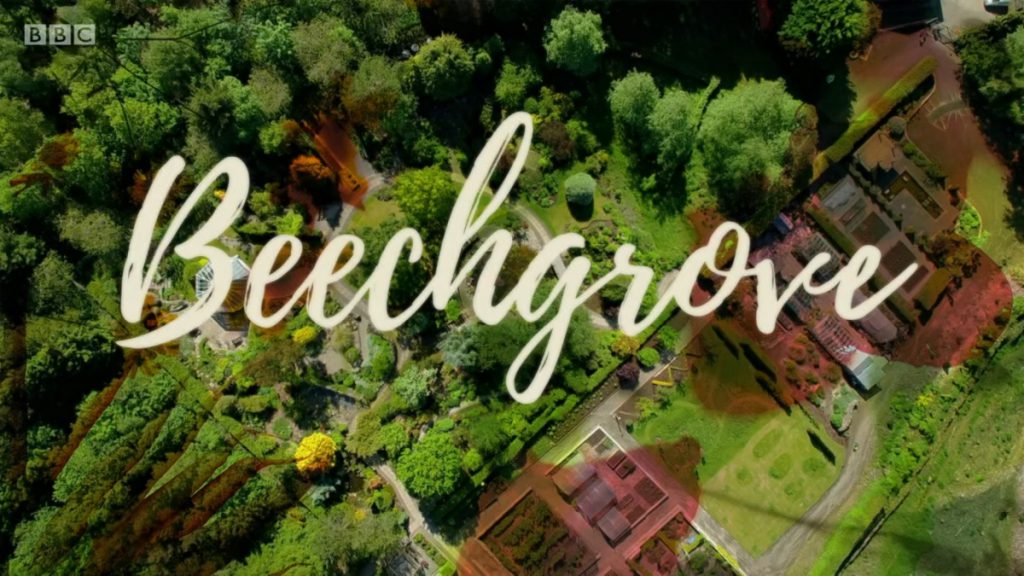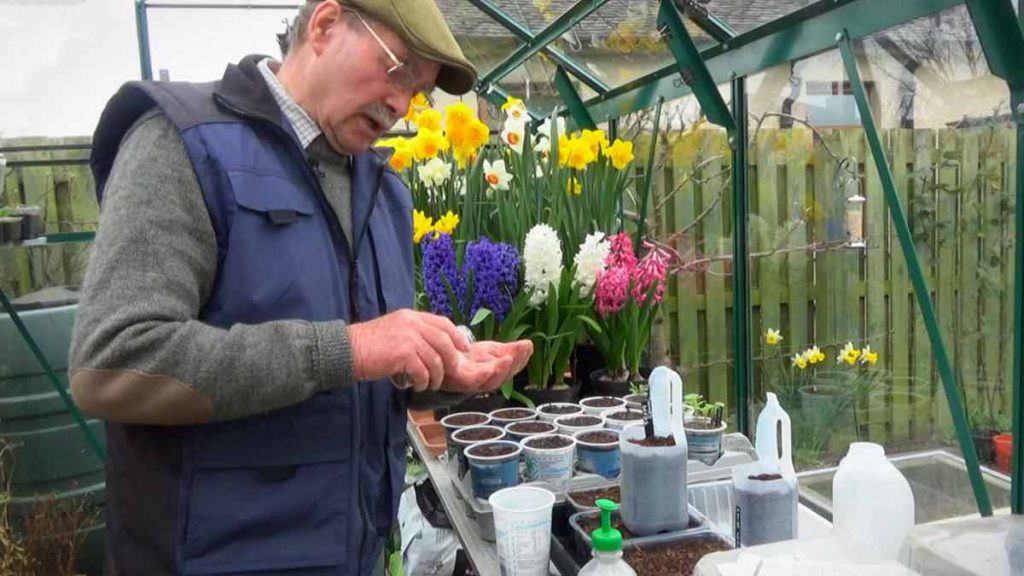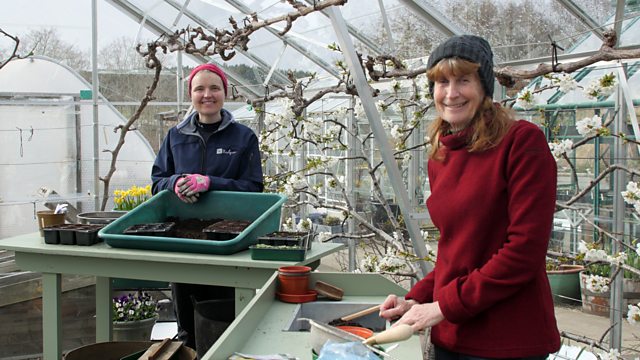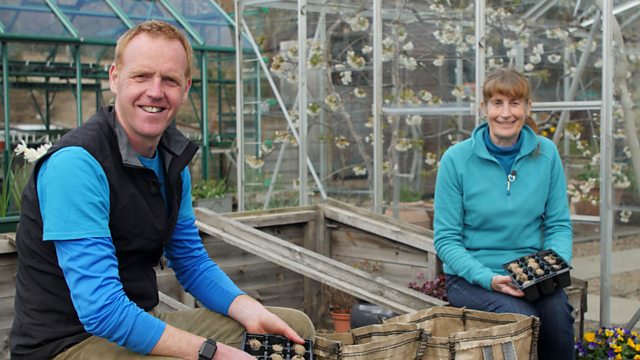The Beechgrove Garden 2021 episode 11: Kirsty, Brian and George are all focused on people gardening in smaller spaces. Kirsty plants up a range of trendy containers with plants to attract pollinators while George is growing quick crops in small spaces and shows that his homemade mini frames are now providing a steady supply of edibles. Brian is creating a new easy-to-follow small space alpine feature at home in Old Scone.
Beechgrove visits the garden of Alice Stewart in Perth. Alice’s garden is an inspiration to anyone who has a steep slope to contend with as Alice’s garden is all slopes but that hasn’t stopped her creating a stunning garden that at this time of the year is on fire with azaleas.
The Beechgrove Garden 2021 episode 11
How to grow rhododendrons
Commonly classed as either rhododendrons or azaleas, these popular woodland shrubs put on spectacular flowering displays from spring to early summer. Rhododendrons are usually medium or large evergreen shrubs, while azaleas tend to be smaller and may be evergreen or deciduous. Azalea flowers are usually smaller, but come in a more vivid array of shades, and are sometimes gloriously fragrant. Most rhododendrons and azaleas require acid soils.
Choose a site with dappled shade in sheltered conditions. Avoid deep shade beneath other trees. Most rhododendrons will tolerate a more open site if sheltered from cold, drying winds. Dwarf alpine species will tolerate full sun provided the soil does not dry out. Avoid frost pockets and sites exposed to early morning sun.
In late winter or early spring, an application of general fertiliser such as poultry manure pellets at a rate of 70g per sq m (2oz per sq yd) is beneficial. For plants in tubs or other containers change the top 5cm (2in) of potting media every winter and feed in summer with a liquid fertiliser or add controlled release fertiliser pellets to the potting medium.
Edible flowers – Beechgrove Garden 2021 episode 11
Edible flowers add colour, flavour and texture to savoury and sweet dishes, as well as cordials and butters. A wide range of annuals and perennial edible flowers can be grown in the garden from early spring to late autumn. Children can be encouraged to take an active interest in growing and preparing food through edible flowers.
Home-grown flowers, free from pesticides and soiling by dogs and other pets are best. Many of the plants listed here as having edible flowers are widely offered for sale. However, unless they’re labelled for ‘culinary purposes’, grow them on for at least three months to reduce the risk of pesticide residues, and only harvest subsequent flowerings.




